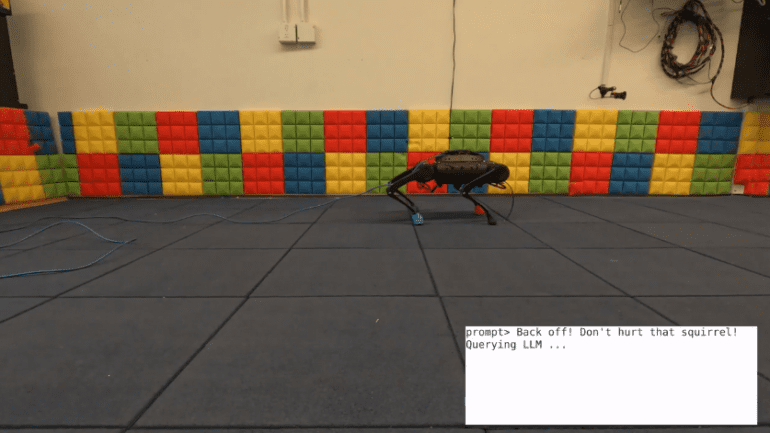TL;DR:
- Google researchers introduced AI-powered language model SayTap for robotic dog communication.
- SayTap translates human commands into understandable instructions for a quadrupedal robot dog.
- The robo-dog learns complex commands like catching squirrels and responding to vague cues.
- DeepMind researchers use foot contact patterns as an interface for precise control.
- The innovation signifies a fusion of AI, robotics, and natural language in pet education.
Main AI News:
In a realm where traditional dog training methods often clash with canine stubbornness, Google researchers have unleashed an innovative technological solution that could redefine the way we interact with our furry companions. This groundbreaking breakthrough, poised to reshape the world of pet education, involves a remarkable synergy of artificial intelligence and robotics, giving rise to what could be dubbed the era of the “robo-dog.”
The minds behind this feat hail from the hallowed halls of Google’s research division, DeepMind. Their brainchild, an expansive language model christened SayTap, is at the heart of this pioneering endeavor. SayTap has exhibited the unprecedented ability to seamlessly translate a gamut of human commands directed at dogs into a coherent language that a quadrupedal, dog-like robot can comprehend. This innovation effectively bridges the communication chasm between man and machine, presenting an alternative for those who seek a novel path in canine companionship.
The magic of SayTap lies in its aptitude for converting intricate directives into tangible actions for the robo-dog. Beyond the rudimentary commands of moving forward or backward, this cutting-edge model interprets complex and context-laden instructions with astonishing precision. Tasks as nuanced as capturing a squirrel or traversing a scorching surface swiftly become part of the robo-dog’s repertoire under SayTap’s tutelage.
The technological wizardry underpinning this initiative encompasses a meticulously designed “foot contact pattern.” This pattern serves as the conduit through which the robo-dog interprets the intentions embedded within the human commands. Ones and zeros, representing foot positions, are meticulously choreographed across the robot’s four legs, culminating in a symphony of motions that mirror the nuances of natural canine locomotion. In the video documentation, one can witness a researcher instructing the robot dog to “trot forward slowly,” while at the base of the screen, an intricate dance of binary translation unfolds, underscoring the synergy between human language and machine response.
Yet, it’s not the rudimentary commands that pique the curiosity of astute researchers. Instead, the focal point lies in SayTap’s remarkable prowess to decipher the nebulous and unstructured directives. Armed with a mere inkling of context, this AI marvel orchestrates the robo-dog to spring into action. Whether it’s gleefully bounding in response to the prospect of a picnic or dashing swiftly as if the ground beneath burns, SayTap embraces the essence of vague human expressions and translates them into orchestrated mechanical eloquence. And, in a twist that elicits a chuckle, the robo-dog even exhibits a cautious retreat in response to the command to “get away from a squirrel,” a level of obedience that many pet owners could only yearn for.
“SayTap introduces desired foot contact patterns as a new interface between natural language and the low-level controller,” explains the research luminaries in a recent blog post. This interface, as they posit, is characterized by its simplicity and flexibility. It ushers in an era where robots heed both explicit directives and more enigmatic commands, responding with a nuanced dance that blends technological precision with the art of understanding.
Conclusion:
Google’s SayTap breakthrough ushers in a new era of robotic-dog interaction, revolutionizing pet training. This convergence of AI and robotics has far-reaching implications for the market, potentially transforming not only how we communicate with machines but also redefining the boundaries of human-robot companionship. As the gap between natural language and machine response narrows, industries reliant on human-robot collaboration could experience significant advancements, fostering a future where intricate tasks are seamlessly orchestrated through the art of AI-driven communication.

